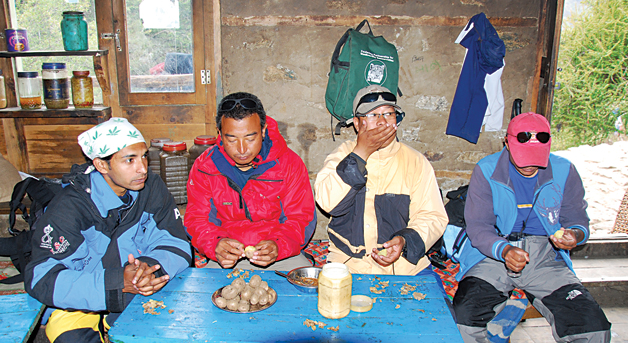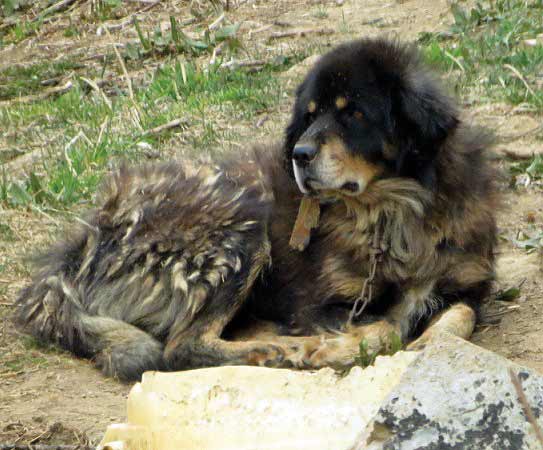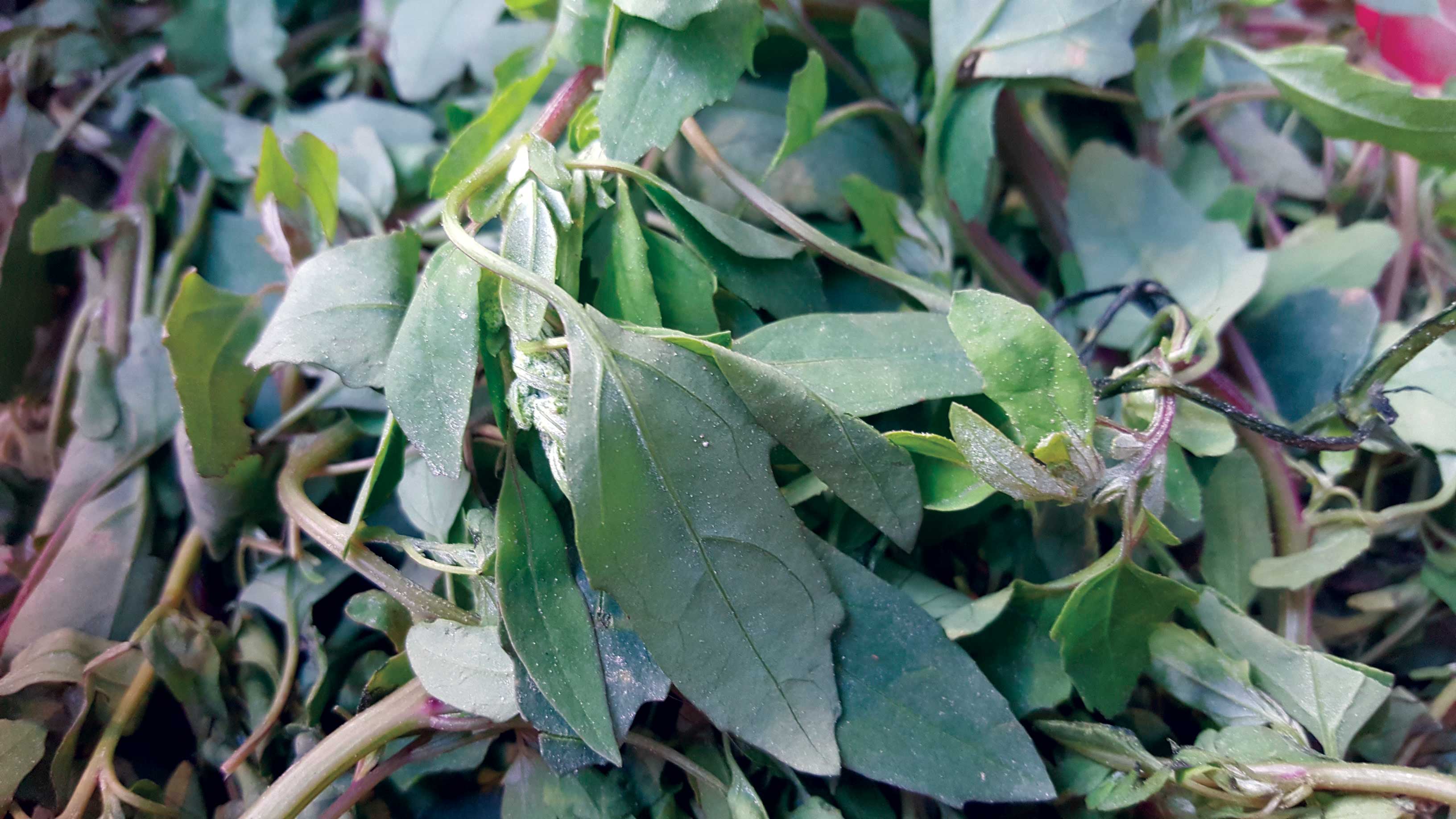
A warm glow slowly spread outwards from my stomach. The dining room was cozy, paneled in pine and I had just finished one of the finest meals I had ever had. My good friend Dr Chandrasekhar, a Community Medicine specialist, and I were trekking in Mustang, the dry desert like region north of the Annapurnas. It was during Dashain, 2003. We were in Tukuche, a major center during the days of the salt trade with Tibet and now a small town on the trek route to Jomsom, the district capital and airport. We were staying in one of the old houses of the Thakali salt traders and merchants that had been converted to a trekking lodge. The owner took great pride in showing us the richly carved window that his great grandfather had commissioned. Newar artists from Kathmandu had excelled in creating the masterpiece.
The owner was a trove of information about the culinary traditions of Mustang. We’d requested special Thakali khana (meals) for dinner and thoroughly enjoyed it. A little earlier we had visited the Tukuche Distillery where we met Mrs. Kalpana Sherchan, the owner, who was happy to show us around. The prayer room of Ekai Kawaguchi, the famous Zen Buddhist monk who had stayed in the house enroute to Tibet over a century earlier, was still carefully preserved and maintained. We mentioned the Thakali Kitchen, one of our favorite restaurants in Pokhara, and Kalpana said that her son runs the restaurant. He was now home visiting with friends and relatives celebrating Dashain and we were invited to join the celebrations. Before we left to return to our lodge, Chandra bought one bottle each of the distillery’s various brandies – apple, peach, apricot, cherry, orange and a few others – which he enjoyed sharing with friends back in Pokhara later.
Our dinner that evening in the lodge took a long time to be prepared. The owner was a ‘foodie’. He stated that his sister was a famous cook and was invited to cook at all major functions. The food was delicious. The rice cooked the Thakali way, the fragrant green dal (lentils), potatoes fried in clarified butter (ghee), stir-fried green leafy vegetables and a species of sun dried vegetable specific to the Mustang region, topped off with freshly prepared chutney and radish pickle spiced with chili peppers and timur (Zanthoxylum alatum), also called Nepali (or Szechuan) pepper – a Thakali specialty. The piece de resistance was of course the goat meat curry. The meat was well-cooked, soft and delicious to the palate. The curry was well spiced but not hot, and various flavors created a pleasant symphony in the mouth. The Thakalis (an ethnic group of Mustang) are masters at blending flavors and tastes to create preparations that delight the taste buds. Their fame has justly spread all over Nepal.
Trek to eat
Trekking is hard work – ukalo-oralo, up and down – and you develop a big appetite. The food is fresh and delicious. I have trekked and traveled in many regions of Nepal and in this article describe a few memorable meals I had during these jaunts. I will not be covering the major cities of Kathmandu and Pokhara about whose culinary attractions much has been written.
Buff curry in the Annapurnas
Ghandruk, at around 1,900 m (6,200 ft), is a major trekking destination in the Annapurna region. The trail to the Gurung village is broad with plenty of rest stops, and offers spectacular views of Annapurna South and Annapurna I. The Himalaya Lodge is situated at the top of the village and is a wonderful place to stay. The lodge offers all modern conveniences in a traditional setting. My friends and I really appreciated the amount of thought and effort that had gone into making things ‘just right’ for the trekkers. The dining room was traditional and we had a late lunch at around six in the evening. The dal was delicious but different from the green one favored by the Thakalis. I especially liked the fresh cabbage lightly stir-fried with spices. The ‘buff’ (buffalo) meat curry was spicy and delicious. They had an ornately carved copper bell to summon the waiter if you needed a refill. We made full use of the bell for frequent refills since we hadn’t eaten anything substantial since morning!
Rigi-kur in the Khumbu
Namche Bazaar, at around 3,400 m (just over 11,000 ft), is the unofficial capital of ‘Sherpaland’. Potatoes were introduced into the high altitude Khumbu region in the 18th/19th century and have played a major role in getting the Sherpas to follow a more settled lifestyle as agro-pastoralists. It soon became their staple food.
At the ‘Panorama Lodge’ adjacent to the Sagarmatha National Park information center near the top of the village. I ordered a potato pancake for lunch intending to sample the traditional food of the Sherpas. The pancake, called rigi-kur in Sherpa language, was light, crispy and fluffy, and slightly sweet in taste. It is traditionally eaten with two accompaniments. One is a very hot sauce made of green chilies, famously known in Nepali as jyaan mara khursani (literally, ‘life killing chilies’). I took a generous helping and discovered the reason for the name. I was on fire and sweating profusely in the cold, dry air. It took over ten minutes before I simmered down. The other accompaniment, som, is a rather pungent creamy cheese prepared by repeatedly churning yak milk. It is remarkably effective in dousing the fire of the chilies.
I also enjoyed potato pancakes in the Khumbu at the River View Restaurant on the trail to Namche, in the narrow gorge cut by the Dudh Koshi River. The location is magnificent, right by a large waterfall. We gave our order, waited and enjoyed the scenery. Everything was prepared fresh. The potatoes were mashed together with a selection of spices. The chilies were ground together in a pestle. And the aroma of the pancake sizzling on the hot griddle brought on a copious flow of saliva. The rigi-kur pancake is thick and filling, with a pleasant after taste.
Chicken curry in Langtang
Often the best food is available in the most unlikely place. On the way back from Dhunche, the trail head for Langtang (north of Kathmandu), the bus stops at a small roadside hamlet. The restaurant is unassuming but always crowded. I was a bit apprehensive about hygiene, but followed the example of my fellow passengers and fell to it. This particular Brahmin hotel is famous for its chicken curry, and the well-cooked tough country chicken was delicious.
Many years back I was in Khudi, a village north of Besisahar in Lamjung district. We were staying in a stylishly rustic lodge. The specialty of the house was dal bhat (rice and lentils) with chicken curry. We were on our way back from trekking in Manang and a three-day bandh was on, stopping all transport from Besisahar, the road head. My friend Dr. Praveen Partha and I spent the time resting, eating the delicious chicken curry and watching the waters of the mighty Marshyangdi rushing down to join the Ganges in India before eventually disgorging into the Bay of Bengal.
Ghorepani (literally, ‘horse water’) is a famous viewpoint in the Annapurna region. The village is popular with trekkers and has evolved to meet their needs. There are plenty of lodges, shops and even a discotheque. ‘The Snowland Lodge’ is one of my favorites situated near the top on the way to Poon Hill. The views are magnificent and you can see the Annapurnas from your bedroom. Corn bread – thick, warm, fluffy and delicious – is one of the specialties of the lodge. I always have it for breakfast when staying at Snowland.
Down in the Kali Gandaki river valley, Tatopani (literally, ‘hot water’) was one of the first settlements to be discovered by trekkers. The village is a steep descent from Ghorepani and is situated at around 1,000 m (1,200 ft) on the banks of the mighty river. The hot springs give their name to the place and are very popular with trekkers. The ‘Old Kamala Lodge’ is an institution in Tatopani. I happened to stay at this delightful lodge on my way up to Jomsom. The thali dinner was excellent (a full course meal named after the brass dish, a thal, on which it is traditionally served). The lodge’s unique selling point is the rich variety of fresh vegetables metamorphosed to appetizing curries and fried preparations.
Kalopani (meaning ‘Black Water’) is a famous mountain viewpoint in Mustang District, with magnificent views of both the Annapurna and the Dhaulagiri Himals. The village marks the beginning of the relatively flat region of Mustang known as Thakkhola, after a steep climb up through the narrow Kali Gandaki gorge. The ‘Pine Forest Lodge’, true to its name, is situated in a delightful pine forest and is a training site for students of the Dhaulagiri Vocational Training Center. I especially like this lodge’s puri-bhaji (puri is an Indian pancake fried in oil and bhaji refers to a thick and spicy vegetable preparation that goes with it). Finding this dish in such an unlikely location is, to say the least, quite amazing. The puris were delicious. The bhaji was well spiced and the hill potatoes enhanced the taste. The only drawback was that potatoes took longer to cook in the thin mountain air, which meant a longer wait for the food.
Apple juice in Marpha
Marpha is a famous tourist village situated just before Jomsom in Mustang. In the 1950s horticulture was introduced in this region and Marpha is famous today for its apples. A Marpha specialty is fresh apple juice. Golden apples are squeezed to produce a rich and wonderful potion that has been described as the ‘Ambrosia of the Gods’. The setting, at the foot of the Nilgiri mountains, is magnificent and I am sure no one can stop at just one glass of this magical nectar.
The ‘Riverside Springs Resort’ is a luxury hotel maintained by the Nanglo Group at Kurintar, a small settlement in Chitwan district situated along Prithvi Rajmarga, the Kathmandu-to-Pokhara highway. The hotel is the lunch stop for the luxury Greenline buses. I am always impressed by the tea and coffee served at the resort. They are among the best I have tasted, and I believe it is the richness and purity of the milk that makes them so delicious. I rarely drink two cups of tea or coffee, but at Riverside Springs, I always do.
Tibetan gyakok in Khingar
The trekking areas and the villages of Nepal have a lot to offer the discerning traveler. What makes a particular lady or a gentleman a famous and sought after cook? I think it is love of food and of cooking, and intimate knowledge of herbs and spices, fuel and cooking utensils. These cooks love to show their virtuosity and talent to their guests. In most cases, the local cooks excel in preparing local food. This is what they have been preparing throughout their lives, while in contrast, Western food is an acquired taste and a learned habit.
One famous cook whose culinary masterpiece, the gyakok, a Tibetan-style hot-pot, I have not yet tasted is the lady running the Blue Sheep Valley Lodge in Khingar just before the temple village of Muktinath in Mustang. My good friend Dr Partha never gets tired of singing her praises. God willing, one of these days I shall enjoy the creation of this master chef of Khingar. I look forward to the ‘red letter day’ with pleasant anticipation.
So friends, hit the magnificent trails of Nepal. Who knows what culinary specialty awaits your pleasure at a magnificent mountain village perched on a shelf with views of the Himals to the north and a winding river below.
Dr Ravi Shankar is a keen trekker and lover of fine food. Contact him at ravi.dr.shankar@gmail.com.











